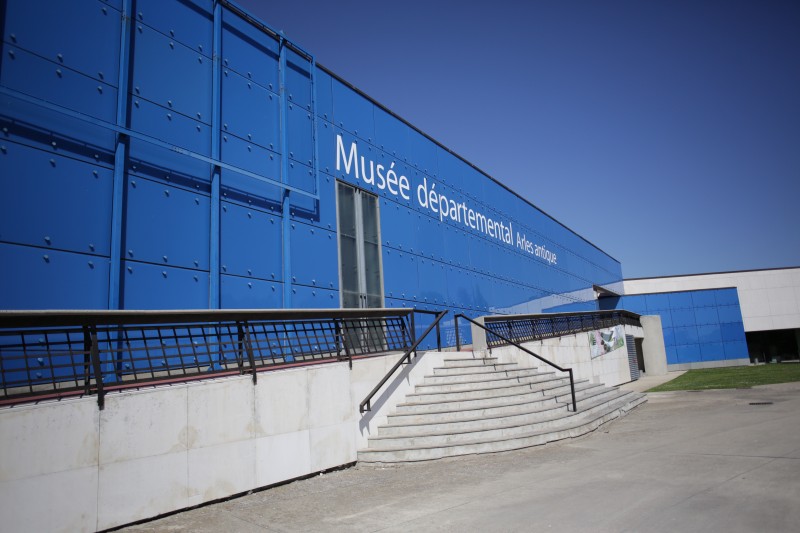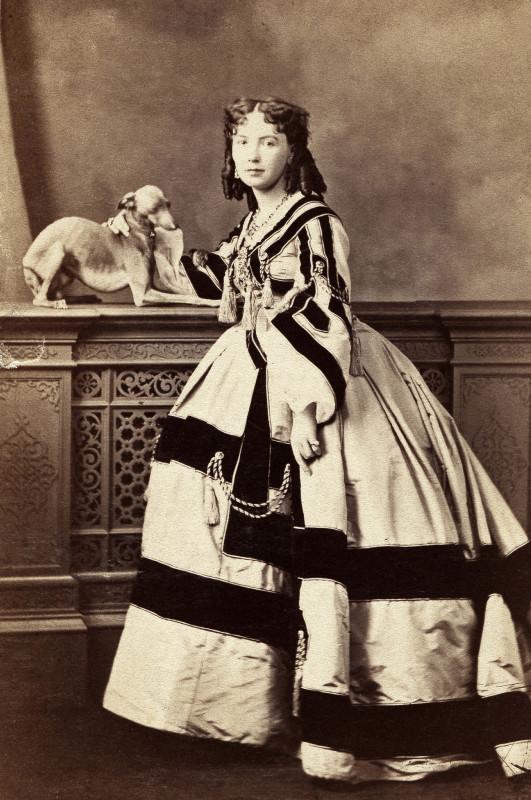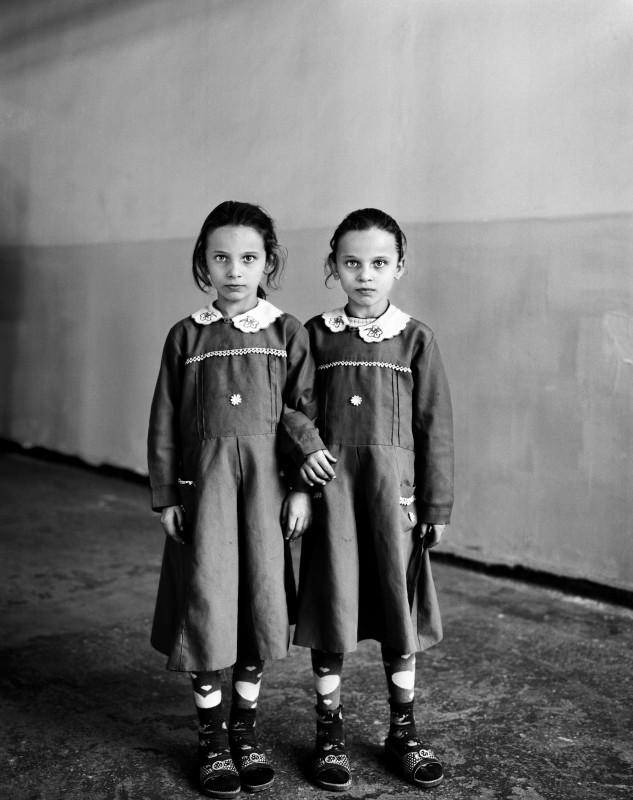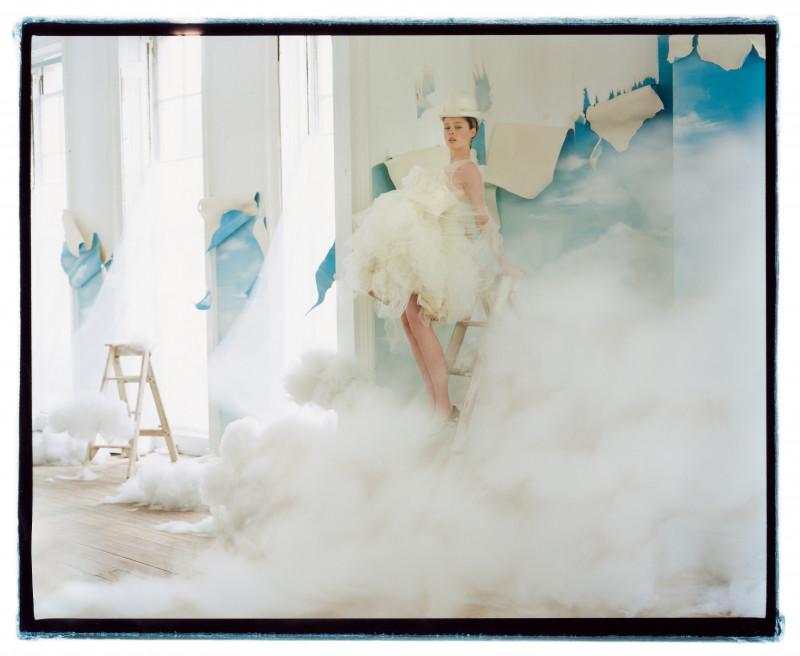Home → EXHIBITIONS 2008 → IMPRESSIONS PHOTOGRAPHIQUES : PROGRAMME PROPOSÉ PAR CHRISTIAN LACROIX 1/3 → HENRI ROGER
Edition 2008
HENRI ROGER
Tricks and effects
"As a child, at my grandparents’ home, I was fascinated by a book from 1900: La chimie sans laboratoire et la physique sans appareil (Chemistry without a laboratory and physics without devices), a window on all those curious, relaxed yet visionary belle époque experiments. I remember it when I see how Henri Roger stages and multiplies himself. Transcending Méliès and even the surrealists, he joins some of today’s practitioners." Christian Lacroix
Tricks and effects
Henri Roger took his first photograph at age of eleven and by twenty he was an engineer and a pioneer of trick photography. Honing his skills, he came up with poetic names for his endless experiments: bilocation, trilocation, powder photos, horizontal projections and so on. The ‘trickster’ began with variations on the self-portrait: Henri Roger made his first on 7th May 1892, titling it Man and His Double, and inventing the term ‘bilocation’ for images using the same model twice. And the technique? Nothing more complicated than negatives retouched, masked and printed together. ‘Trilocation’ was invented between the 23rd and 28th November 1893 with The Photographer Watching Himself Playing Draughts.
Next came more technical fun: in addition to the duplication of its subject, the bilocation Man and His Double on a Stool of 24th October 1894 introduced a change of scale.
There were also non-fake series such as the Horizontal Projections of 1893, inspired by the Bertillon process, and Silhouettes of 1897. In the course of the 1890s his entire family was called in for such novelty mises en scène of middle-class life as Family (1894), elegant ladies in the Luxembourg Gardens (1895), married life (c. 1895) and Young Lady Playing the Melotrope (1897). After the indoor work of his beginnings Henri Roger created series, some faked, some not, in the Forest of Fontainebleau (1897). Even the party for his engagement to Jeanne Viollet, daughter of the head of the Law Faculty library in Paris, became a mise en scène, with Henri Roger climbing the faculty’s lightning conductor so he could be photographed.
From 1901 onwards the arrival of his children provided him with a store of docile models, and the family rituals became photographic ones as well. Each image catches some everyday moment in a way that makes it appealing or unlikely, and it was quite common for the six children to become twelve thanks to the magic of fakery. Henri Roger was the inventor of the ‘19th-century photoblog’, in which he juggles with pictorial conventions. He initiated his eldest daughter Hélène (1901–1985) into the ‘mysteries of photography’ and she remained bitten by the bug to the extent of founding the Roger-Viollet Photographic Documentary Agency in 1938. The First World War brought a change to Henri Roger’s output. After the death of his wife and son he gave up his photographic jokes and undertook more classic renderings of family and Parisian life, and of travels that took him further and further afield until his death in 1946.
Tricks and effects
Henri Roger took his first photograph at age of eleven and by twenty he was an engineer and a pioneer of trick photography. Honing his skills, he came up with poetic names for his endless experiments: bilocation, trilocation, powder photos, horizontal projections and so on. The ‘trickster’ began with variations on the self-portrait: Henri Roger made his first on 7th May 1892, titling it Man and His Double, and inventing the term ‘bilocation’ for images using the same model twice. And the technique? Nothing more complicated than negatives retouched, masked and printed together. ‘Trilocation’ was invented between the 23rd and 28th November 1893 with The Photographer Watching Himself Playing Draughts.
Next came more technical fun: in addition to the duplication of its subject, the bilocation Man and His Double on a Stool of 24th October 1894 introduced a change of scale.
There were also non-fake series such as the Horizontal Projections of 1893, inspired by the Bertillon process, and Silhouettes of 1897. In the course of the 1890s his entire family was called in for such novelty mises en scène of middle-class life as Family (1894), elegant ladies in the Luxembourg Gardens (1895), married life (c. 1895) and Young Lady Playing the Melotrope (1897). After the indoor work of his beginnings Henri Roger created series, some faked, some not, in the Forest of Fontainebleau (1897). Even the party for his engagement to Jeanne Viollet, daughter of the head of the Law Faculty library in Paris, became a mise en scène, with Henri Roger climbing the faculty’s lightning conductor so he could be photographed.
From 1901 onwards the arrival of his children provided him with a store of docile models, and the family rituals became photographic ones as well. Each image catches some everyday moment in a way that makes it appealing or unlikely, and it was quite common for the six children to become twelve thanks to the magic of fakery. Henri Roger was the inventor of the ‘19th-century photoblog’, in which he juggles with pictorial conventions. He initiated his eldest daughter Hélène (1901–1985) into the ‘mysteries of photography’ and she remained bitten by the bug to the extent of founding the Roger-Viollet Photographic Documentary Agency in 1938. The First World War brought a change to Henri Roger’s output. After the death of his wife and son he gave up his photographic jokes and undertook more classic renderings of family and Parisian life, and of travels that took him further and further afield until his death in 1946.
www.roger-viollet.fr Exhibition organised in collaboration with the Roger Viollet Agency, which celebrates in 2008 its 70th birthday and the Parisienne de Photographie. Executive producer: Le Tambour qui parle.
Exhibition presented at the Musée départemental de l’Arles Antique.












